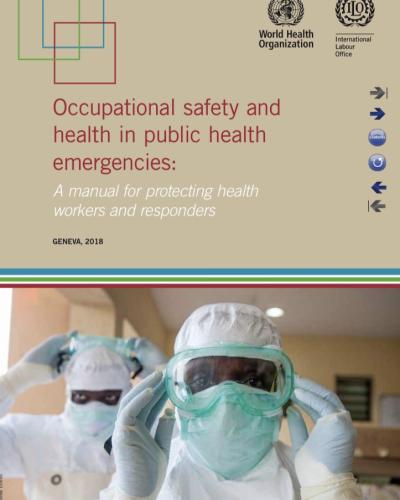Occupational safety and health in public health emergencies

In its Emergency Response Framework, the World Health Organization (WHO) has defined an emergency as a situation that has an impact on the lives and well-being of a large number of people or a significant percentage of a population and requires substantial multisectoral assis- tance [1]. For a WHO response, there must be clear public health consequences. In addition, under the International Health Regulations (IHR), adopted by the World Health Assembly in 2005, a public health emergency of international concern is defined as “an extraordinary event which is determined, as provided in these Regulations: (i) to constitute a public health risk to other States through the international spread of disease and (ii) to potentially require a coordi- nated international response”. Such events may include, inter alia, outbreaks of infectious diseases, hazardous chemical spills or releases of radiation.
During the last five decades, the world has witnessed a wide range of natural and man- made disasters and emergencies. These emergencies included outbreaks of infectious diseases – such as severe acute respiratory syndrome (SARS), H1N1 influenza, Ebola virus disease, cholera, Zika virus – that occurred from time to time in different parts of the world. Apart from infectious disease outbreaks, other key emergencies included radiation emergencies (e.g. Chernobyl, Fukushima), and chemical emergencies (e.g. the Bhopal toxic gas leak, Deepwater Horizon oil spill). In addition, a large number of natural disasters have occurred across the world, such as the Indian Ocean tsunami, and earthquakes, floods and cyclones in Haiti, Pakistan and Philippines.








